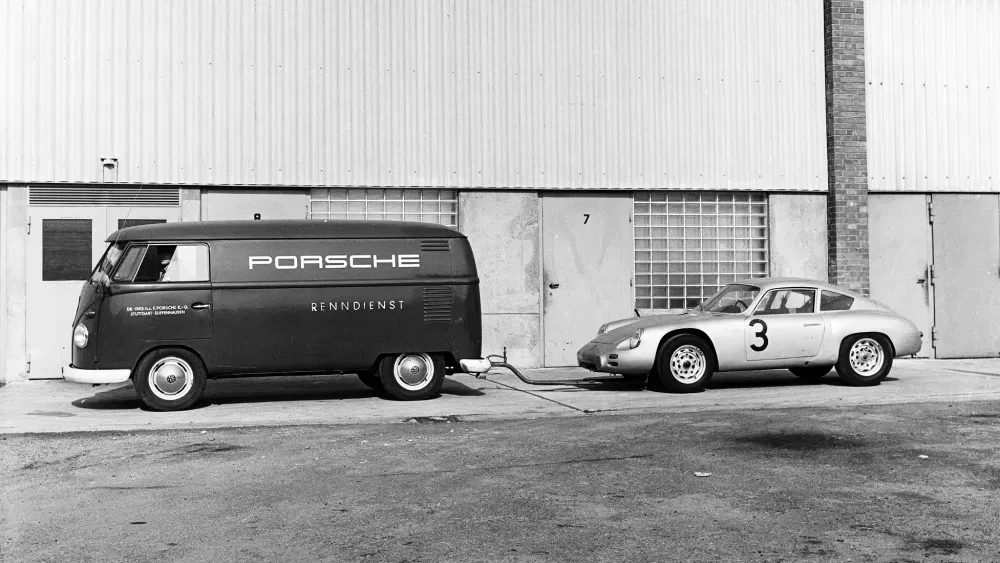
In 1951, Porsche took part in the 24 Hours of Le Mans for the first time. Motorsport has been a central part of the Zuffenhausen company’s DNA ever since this entry of two Porsche 356/4 SL Coupés. From the mid-1950s onwards, the so-called “Renndienst”, which means racing service, was also always there to support both works and customer teams. A couple of now legendary Volkswagen Transporters were used as the backbone of the Porsche Renndienst, as the star in the shadows, so to speak. But what exactly were the tasks of the racing service? And what was the purpose of the Porsche Renndienst Bullis, as they are called today?
In the past, small formula cars were simply loaded onto VW flatbeds. Even the Porsche Renndienst started out small! © David Fierlinger, Elferspot
After Porsche won a class victory at Le Mans in 1951, the motorsport program was massively expanded in the following years. In order to underpin the reliability of its own products, Porsche primarily chose endurance races in which relatively close-to-production vehicles were used. In 1952, Porsche therefore decided to take part in the Mille Miglia in addition to the Le Mans race, which once again resulted in a class victory. This rally led over 1,574 kilometers from Brescia in Lombardy to Rome and back again. Two Porsche 356 1100s were to start there.
In their first races – including the 24h of Le Mans – Porsche competed with 356s. © Unternehmensarchiv Porsche AG
As in the 24 Hours of Le Mans, Porsche was also able to clinch a class victory in the rally across the “boot” at the first attempt. In contrast to the races on the French circuit, however, Porsche was unable to repeat this success in 1953. The experienced Italian teams led by Ferrari and Lancia struck back, leaving Porsche with only a midfield position in both class and overall standings despite fielding numerous 356s.
In 1954, the Zuffenhausen-based company brought a thoroughbred racing machine to Brescia in the form of the new Porsche 550 Spyder. Hans Hermann and Herbert Linge were to build on the successes of the premiere season in the newly developed car. And the duo threw everything they had at it. The drivers narrowly escaped being hit by an express train as they ducked under a closed railroad barrier. As Hermann could no longer slow down in front of the barrier, he stepped on the gas, told Linge “Put your head down!” and a story for the ages was born.
With the Porsche 550 Spyder, Hans Hermann and Herbert Linge provided what was probably the most famous moment of the Mille Miglia. © Unternehmensarchiv Porsche AG
But another vehicle was present at the 1000-mile rally for the first time: The Porsche Renndienst Bulli. It was a Volkswagen T1 Transporter, painted in an eye-catching dark red and labeled “PORSCHE RENNDIENST” on the outside. The Porsche Renndienst van immediately became the racing department’s faithful companion on trips to European circuits, hill climbs and rallies.
From 1954, the Porsche Renndienst Bulli was based on a Volkswagen Type 1 Transporter, later also on the T2/2b. © Porsche
Even in the 1950s, personnel and materials were needed for every race. While the cars themselves were transported to the track either on wheels or by truck, mechanics and spare parts also had to get to the tracks. This is precisely why the Porsche Renndienst has existed ever since. It is made up of specially qualified mechanics and engineers who provide technical support for customer and works teams alike.
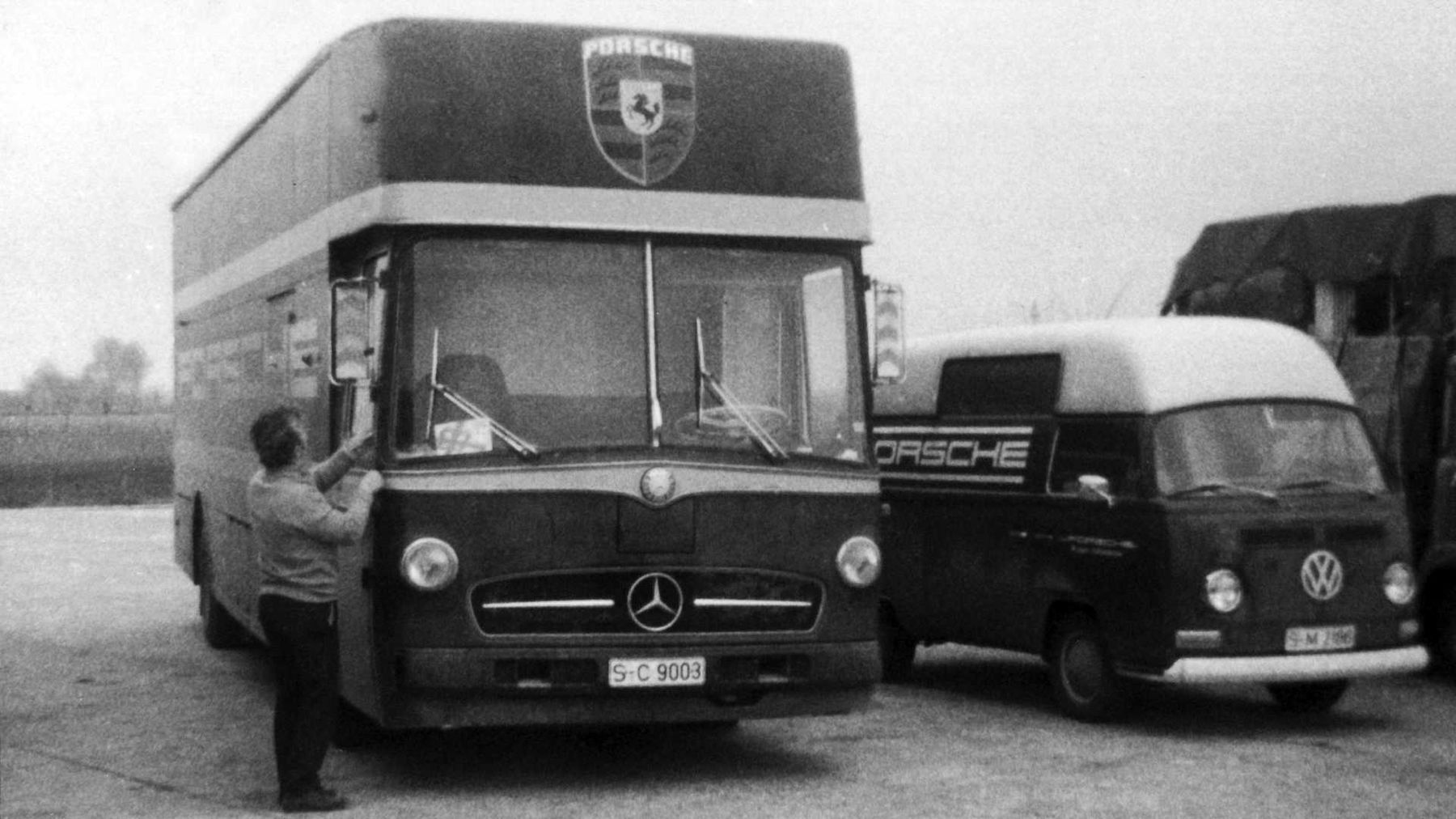
However, the frequent hill climbs and road races of the time presented special challenges. The access roads or parking lots were often not big enough to park larger trucks. Especially as they could not be moved to another location so quickly. This meant that Porsche needed smaller vehicles for the racing service that could transport spare parts, power units and, of course, mechanics.
What could have been more obvious than to convert the air-cooled Volkswagen Transporter accordingly? Porsche built the racing service Bullis from the Type 1 Transporter. Shelves and workbenches were installed directly behind the row of seats. The load floors were reinforced and adapted so that engines and gearboxes could also be transported safely. Lighting was also considered. After all, endurance races and long rallies didn’t stop during the night. During stand-by, the Porsche Renndienst buses also served as improvised sleeping accommodation.
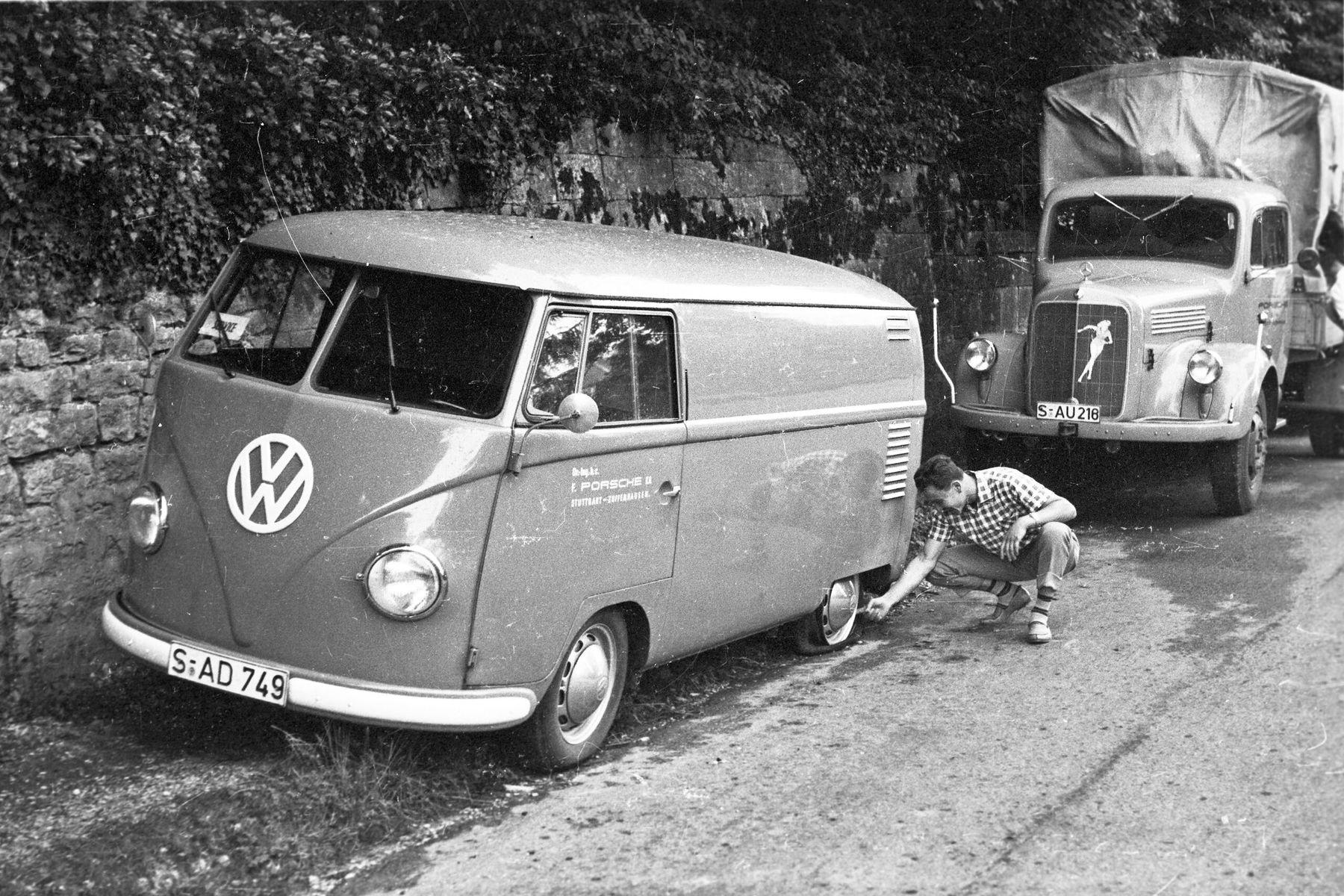
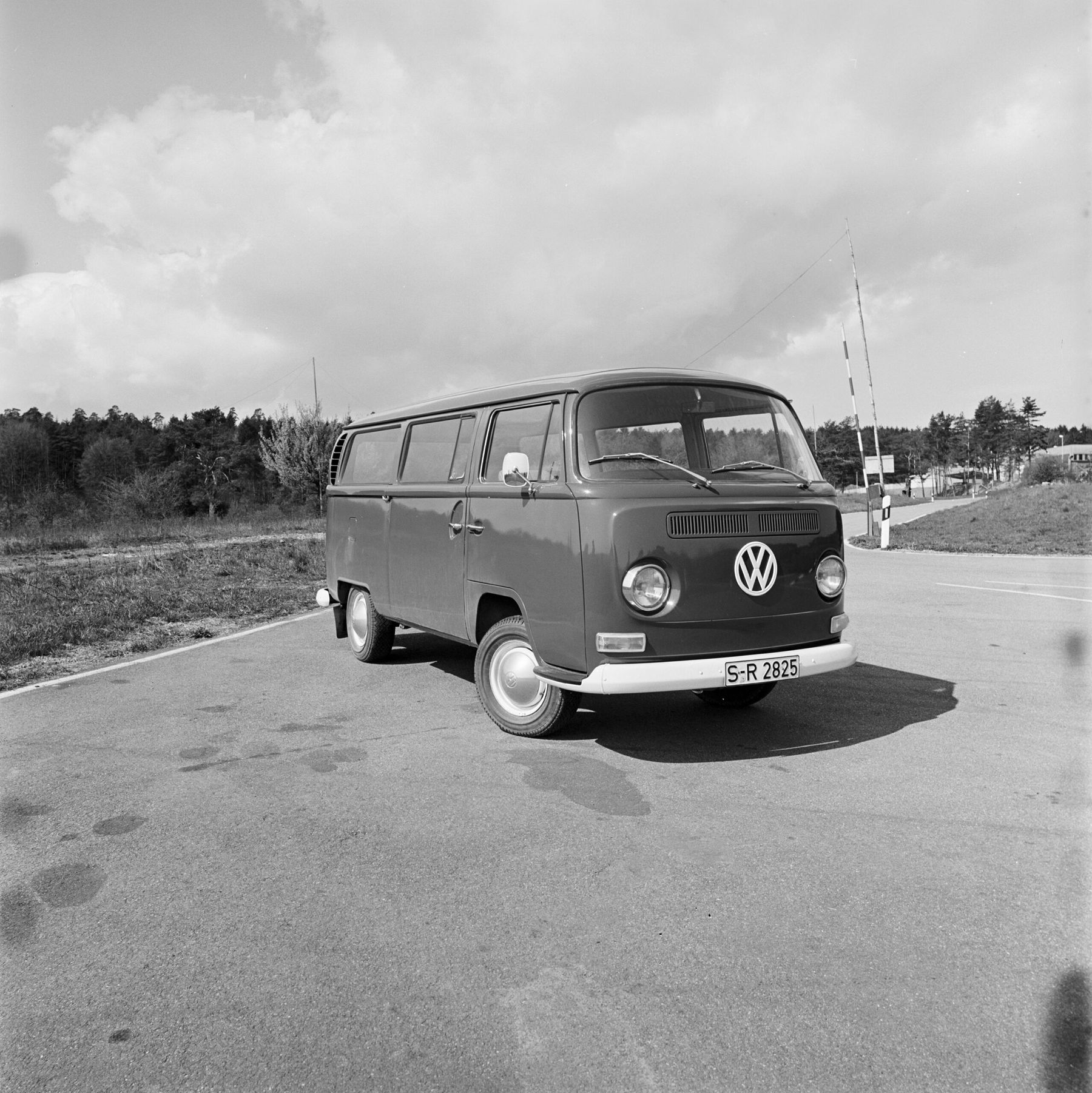
Over the years, the T1 vans were replaced by the Type 2 van. They were available as a flatbed, for example, which the Weissach engineers also liked to use for jokes and photos. Of course, there were also numerous other commercial vehicles in the Porsche Renndienst fleet. Car transports were initially carried out by MAN diesel trucks. A Setra coach was also converted in cooperation with BP.
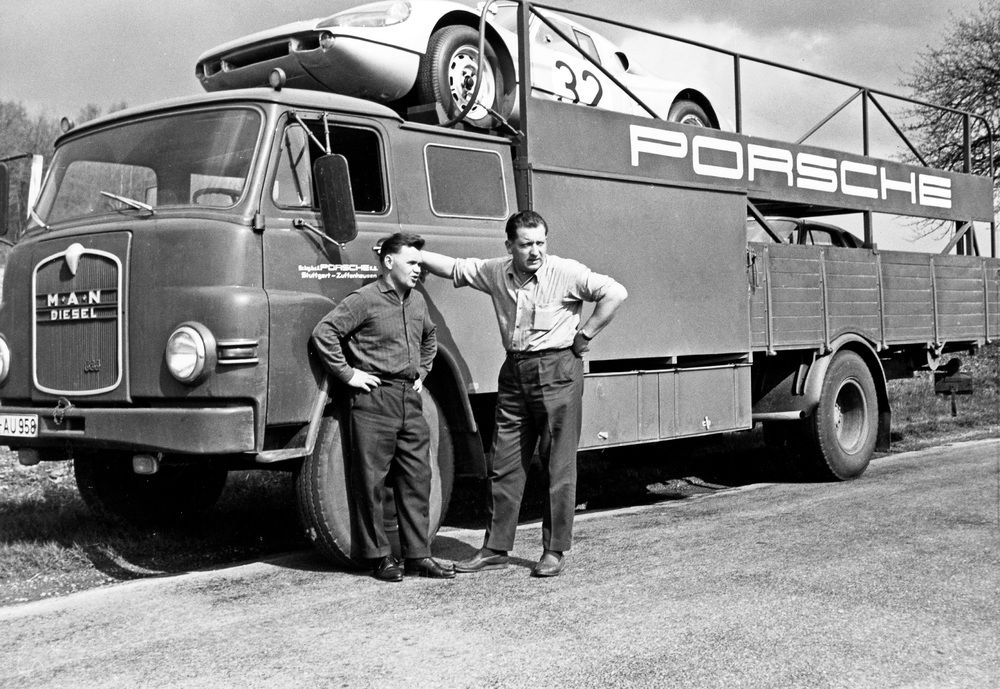
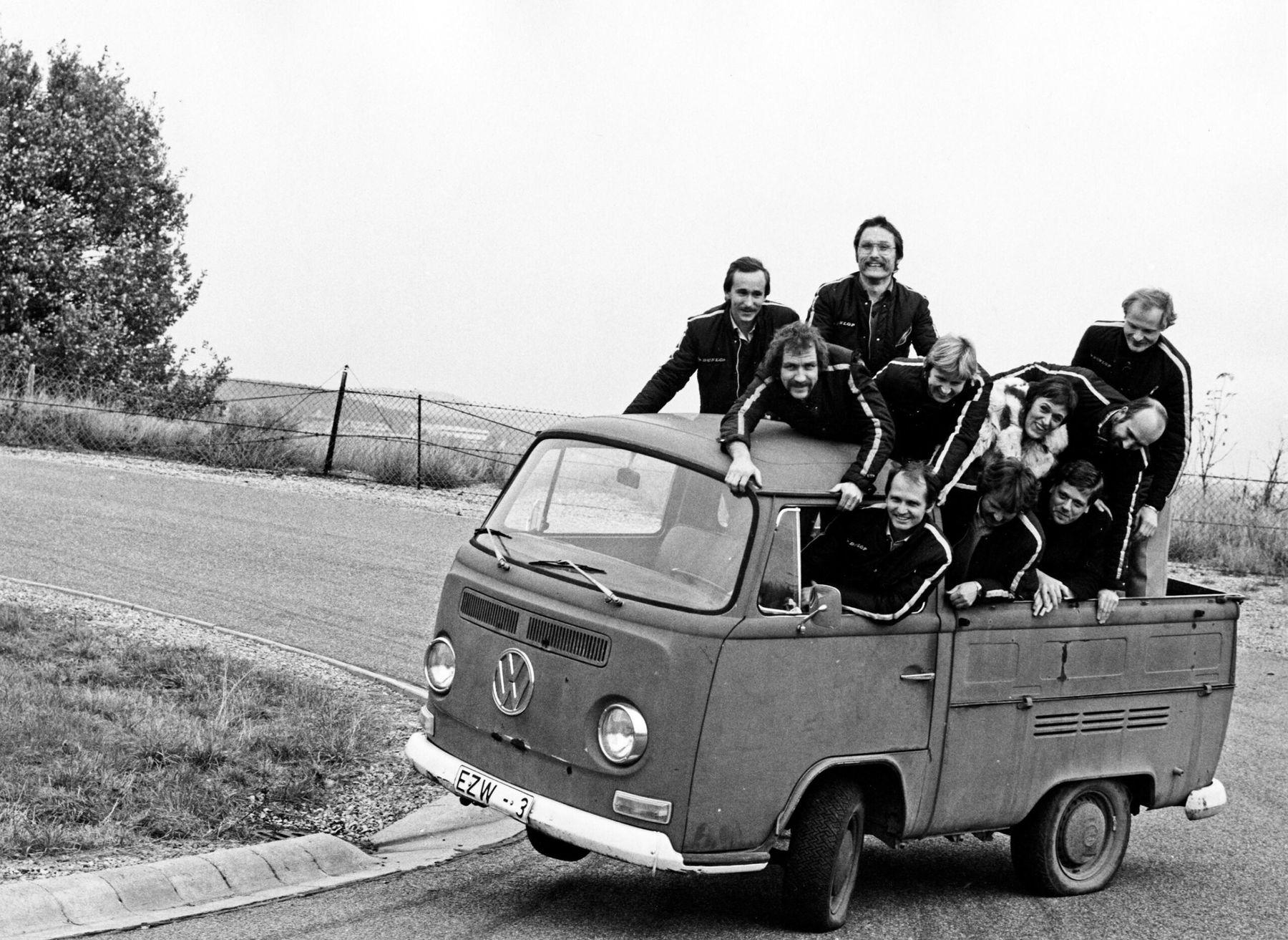
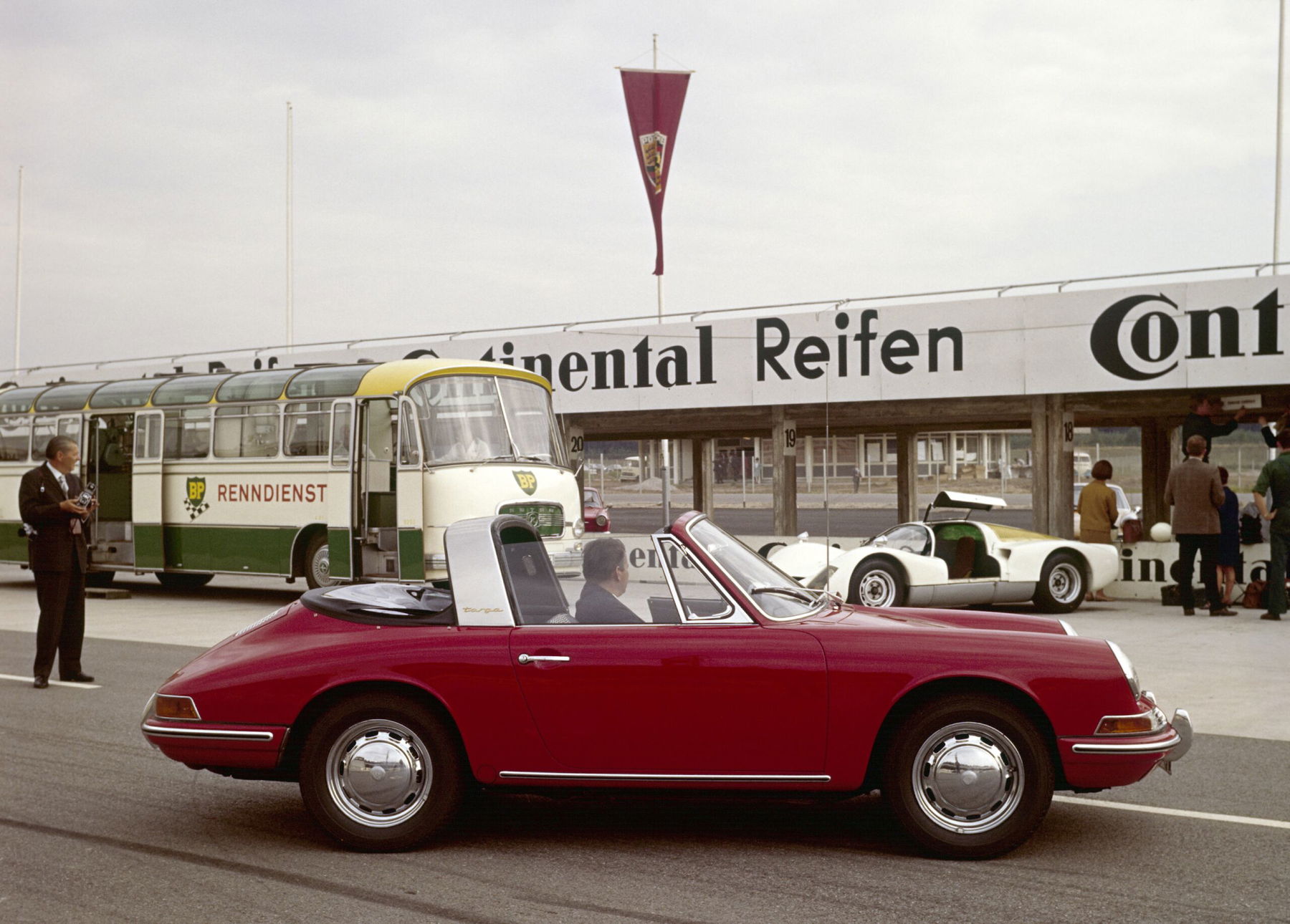
To mark the 75th anniversary of the brand, Porsche revived the Renndienst Bullis. Just in time for the Festival of Dreams, they showed a study called Vision Renndienst. This was a very early design study. Porsche used it as part of Porsche: Unseen campaign. There, Porsche showed a lot of yet unseen concepts and studies. Admittedly, the Vision Renndienst study bore little resemblance to the original Renndienst van.
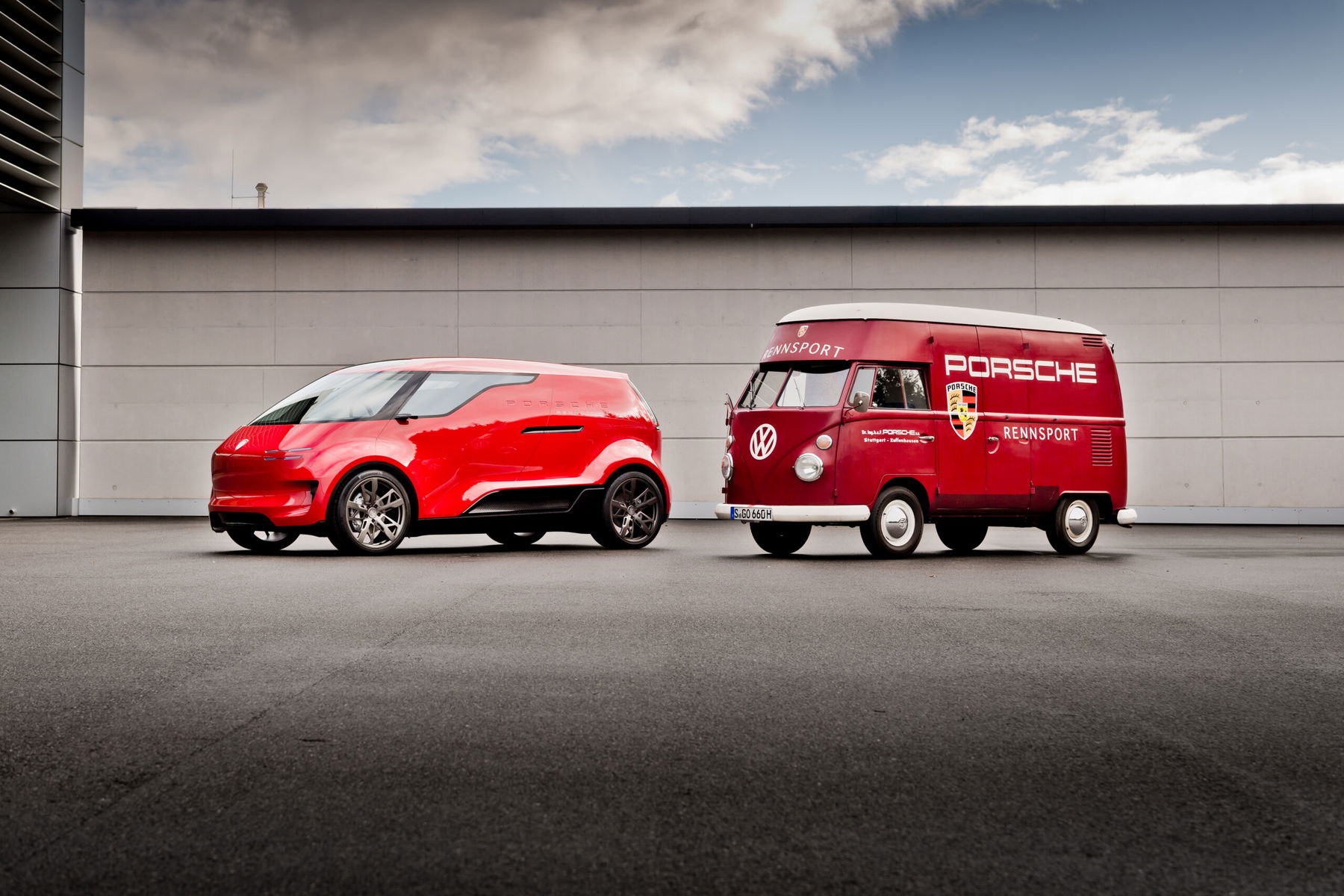
In stark contrast, the Volkswagen ID.Buzz and Porsche Taycan Sport Turismo in racing service design presented by Porsche Netherlands in 2023 were much more functional. Porsche AG was so impressed by the idea that an ID.Buzz Renndienst was present at every single round of the 2023 Porsche Carrera Cup season.
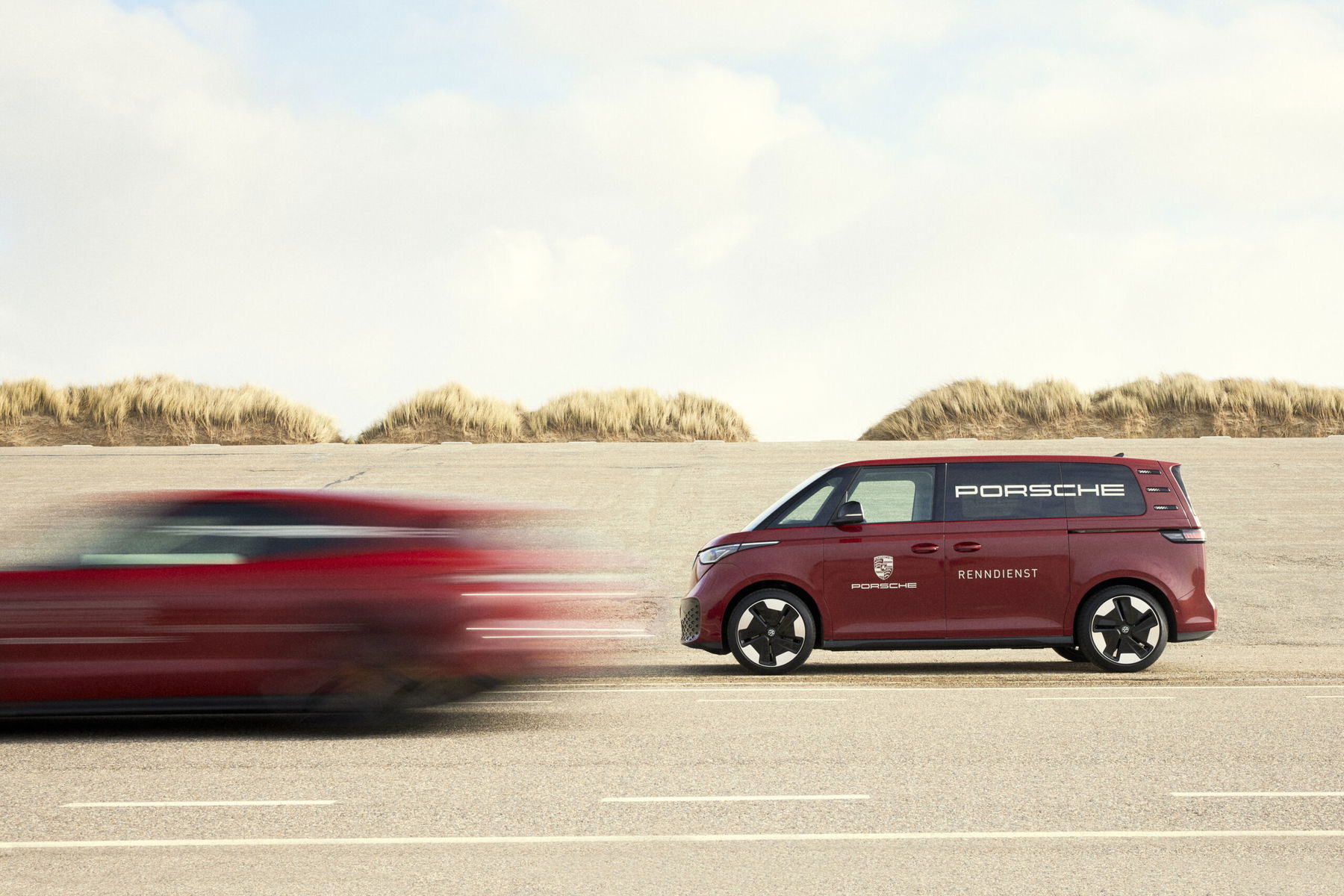
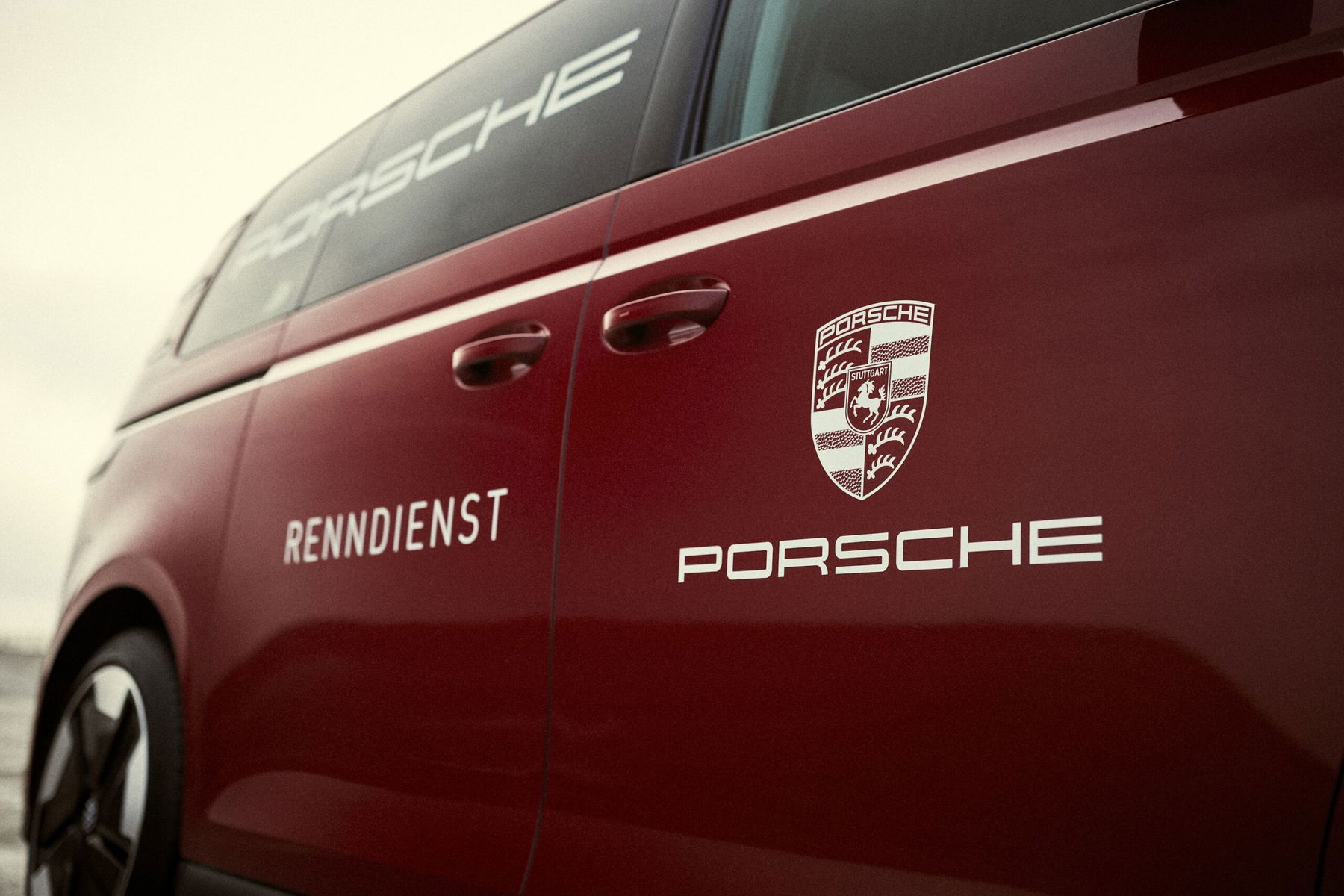
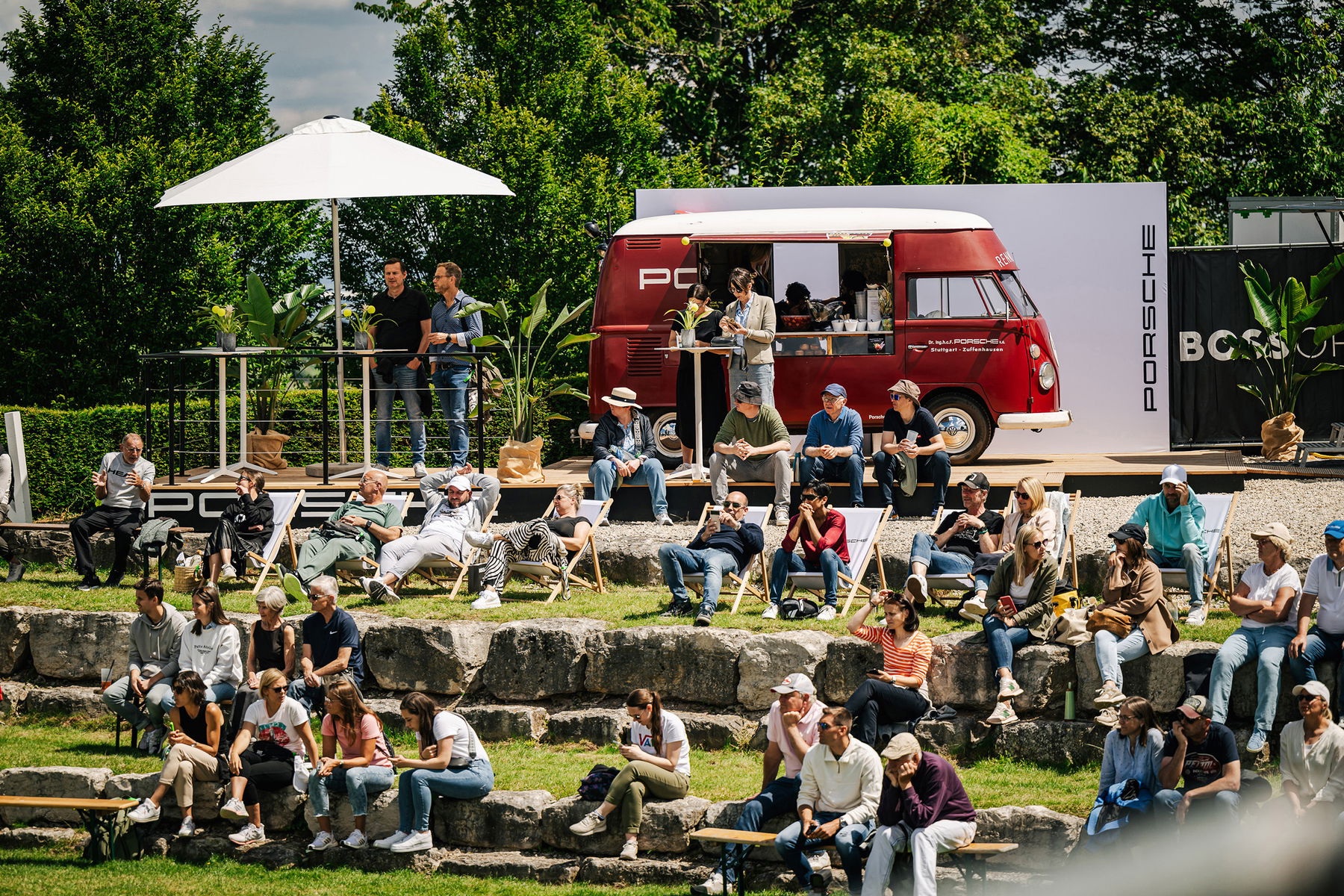
Porsche, being very tradition-conscious, naturally likes to use the charming racing service transporters for advertising purposes. After all, the Bullis enjoy absolute cult status. Nowadays, however, they are rarely used to transport parts and are instead often used as food trucks. However, this also shows why Porsche chose the Bulli as a Renndienst vehicle in the first place. Its versatility was a real selling point. As a result, the VW Bus became the backbone of the Porsche racing department for a long time.
Thanks to Hans-Peter Porsche Traumwerk for lending us the awesome Renndienst Transporter! © David Fierlinger, Elferspot
Elferspot magazine